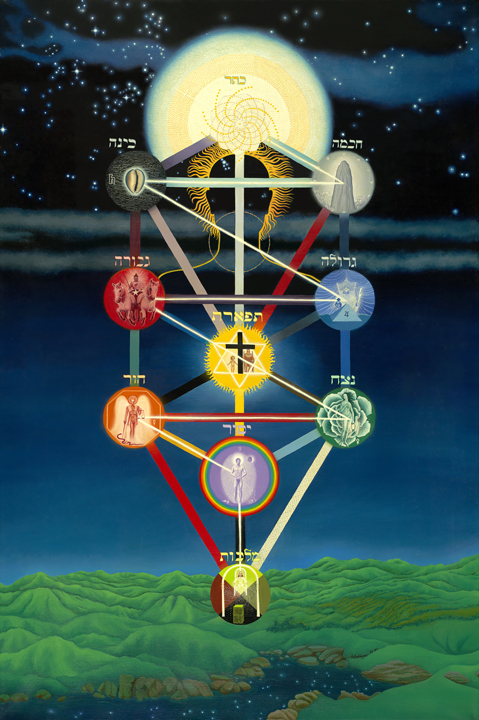
The Tree of Life is one of the most enduring esoteric symbols in the Western mystical tradition. Rooted in ancient Judaic mysticism and expanded by Hermetic and occult schools over the centuries, it serves as a comprehensive map of consciousness and creation. Though its exact origins are difficult to pinpoint, echoes of its structure can be traced through ancient Egypt, Neoplatonic thought, and early Gnostic teachings. In Qabbalistic philosophy, it illustrates the process of emanation: how the infinite, unknowable source—called Ain Soph—flows outward into finite creation. This happens in a structured descent through ten stages or “vessels,” linked by twenty-two interconnecting paths, making thirty-two paths in total. These paths bridge divine potential and lived experience, cosmic intelligence and embodied reality. The Tree, then, isn’t just a metaphysical diagram—it’s a dynamic process of unfolding, returning, and remembering.
The Path of the Sword represents the downward current—the act of spirit descending into matter. This is the way of manifestation, in which divine will is anchored into the world through intentional action. It’s a path focused on discipline, structure, and practice: using ritual, magick, and symbolic systems to shape reality in alignment with a deeper will. This will isn’t driven by ego or impulse, but by a purified inner directive—the higher self-seeking to express its nature in form. The goal here is not escape, but integration: to draw spiritual energy down and weave it into life in a way that uplifts and refines the material experience. It’s a path of sacred craftsmanship.
The Path of the Serpent is the ascending current—the way of return. It’s the journey of consciousness spiraling back toward its divine origin. This path is contemplative, intuitive, and internal. It centers on self-transformation through practices like meditation, dreamwork, and inner alchemy. Rather than shaping the outer world, it seeks to peel away illusion, reaching toward direct experience of truth. The Serpent moves upward through the Tree, not to abandon the world, but to see through it—to rediscover the spark of the infinite within the self. This is the mystical path, where the veil thins and gnosis unfolds.
To work with the Tree of Life is to engage in a living process of refinement and remembrance. Whether walking the Path of the Sword or the Serpent—or dancing between them—you’re tracing the flow of consciousness between source and embodiment. These are not opposing roads, but complementary movements in the great rhythm of becoming. The Sword grounds spirit into form; the Serpent liberates form into spirit. True work with the Tree is deeply personal: a dialogue between your inner architecture and the universal pattern. It invites both mastery and surrender, action and reflection. Over time, what seemed like a mystical diagram becomes something far more intimate—a mirror, a compass, and a guide back to the center of your being.